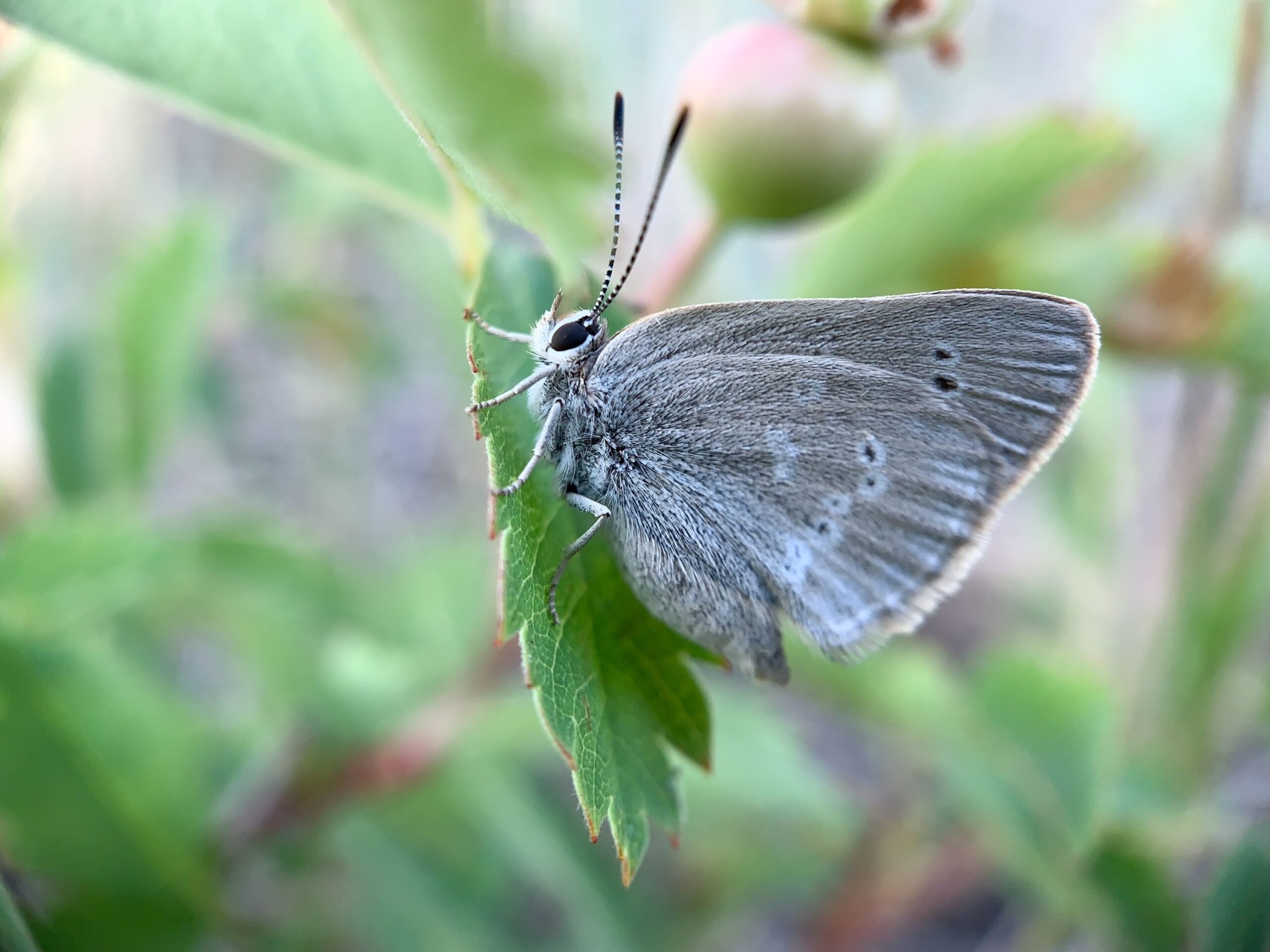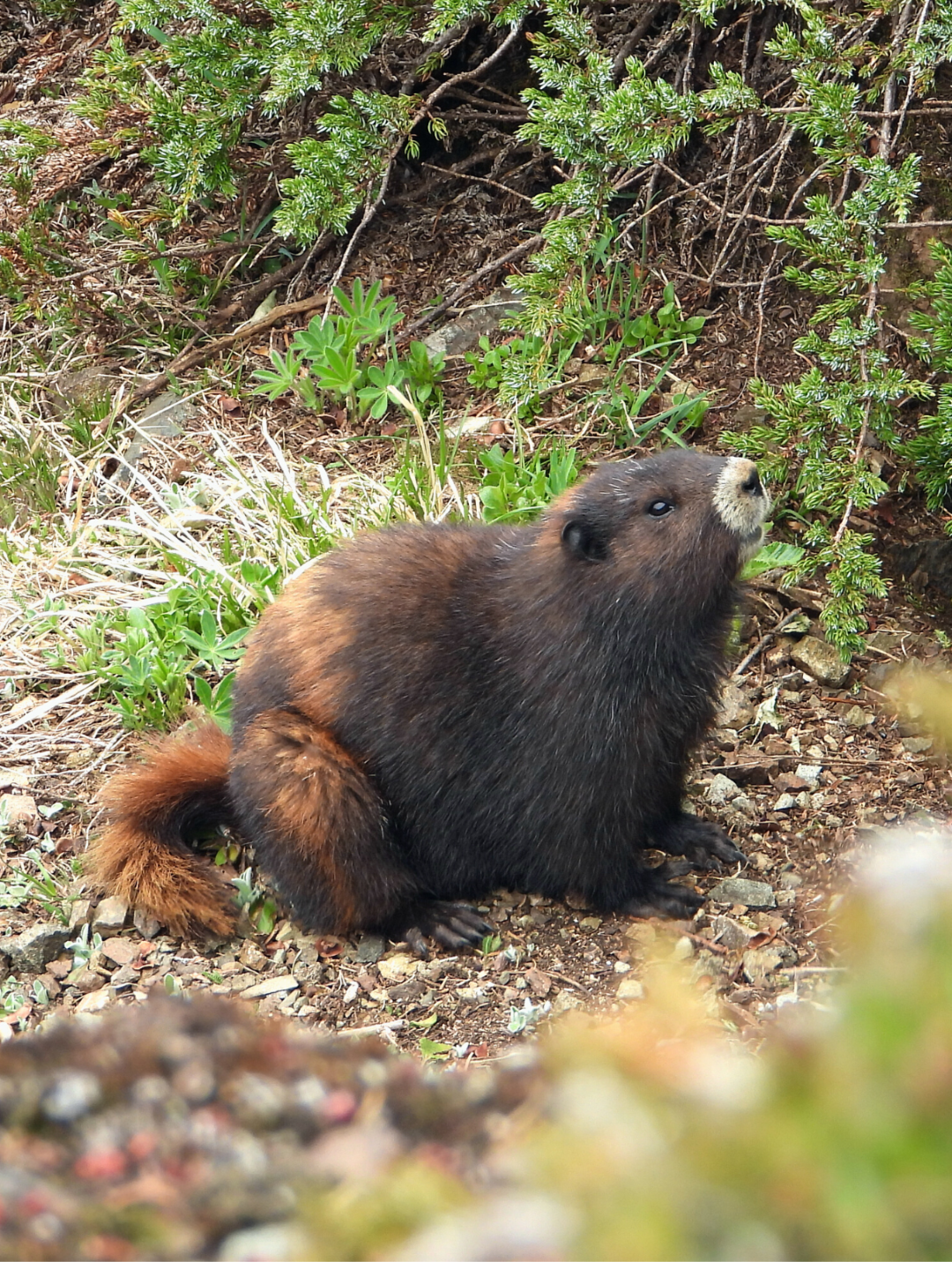Satyrium curiosolus
Curiously Isolated Hairstreak
The curiously isolated hairstreak is a small grassland butterfly found in Western North America. There is a lot that we do not know about this species, so much of our work is about unravelling those mysteries.
The situation
A new discovery
Long believed to be just another population of the widespread curiously isolated hairstreak, this delicate insect—confined entirely to the Blakiston Fan—has now been recognized as its own species: the curiously isolated hairstreak (Satyrium curiosolus). Far more than a taxonomic update, this discovery reveals a lineage shaped by 40,000 years of evolutionary solitude—an ancient survivor tucked away in one of Canada’s most iconic and ecologically rich landscapes.
This reclassification follows groundbreaking genomic and ecological research, confirming the butterfly has been genetically and ecologically isolated from its closest relatives for approximately 40,000 years. Despite surviving repeated glacial cycles, it has remained a distinct evolutionary lineage—both genetically unique and ecologically specialized.
What is threatening the hairstreak?
The only population of the curiously isolated hairstreak is found on the Blakiston Fan in Waterton Lakes National Park. The presence of spotted knapweed (Centaurea stoebe), an invasive plant species, is thought to be a threat to the butterfly as it competes with native vegetation that the curiously isolated hairstreak relies on for food. Natural disasters such as flooding, or fires could also be detrimental to this population. The Waterton population suffered a severe decline in 2018, which was caused by the 2017 Kenow wildfire that burned more than 50% of the curiously isolated hairstreak’s habitat.
Our work
Working with our partners, we are monitoring the curiously isolated hairstreak population and exploring conservation actions. Because this species is so genetically distinct, interventions like wild-to-wild translocations from other populations are not viable. Tailored, site-specific strategies will be essential for its survival. We are working to better understand the life history of this butterfly, its behaviours, interactions with other species, and survival rates.
Our conservation impact
By gaining more insight about this sensitive species, we aim to enhance the population of curiously isolated hairstreak in Waterton Lakes National Park and to contribute useful information for better management planning.
Did you know?
Unlike other butterflies, which thrive in sagebrush steppe, this species depends on a different host plant—silvery lupine (Lupinus argenteus)—and has a mutualistic relationship with a specific ant species (Lasius ponderosae), a pairing not seen in other hairstreak populations. The butterfly larvae will secrete a sugary substance that will attract and feed the ant and in return, the ant will protect the larvae from other predators.
Teamwork
We are grateful for the collaboration and support of the following partners in helping conserve the curiously isolated hairstreak in Alberta.


